 Sunday/Weekend
Sunday/Weekend
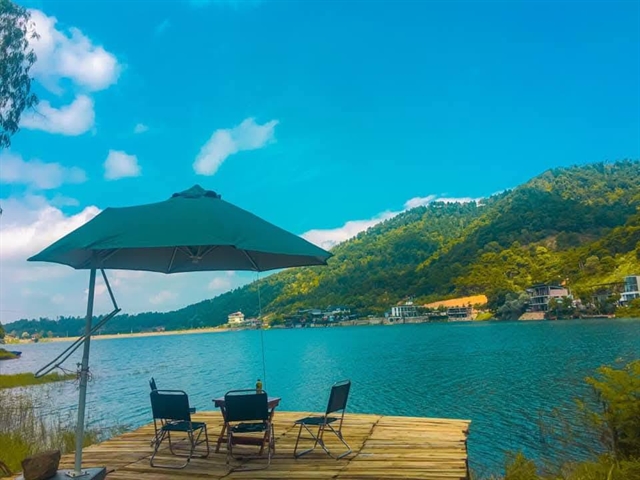
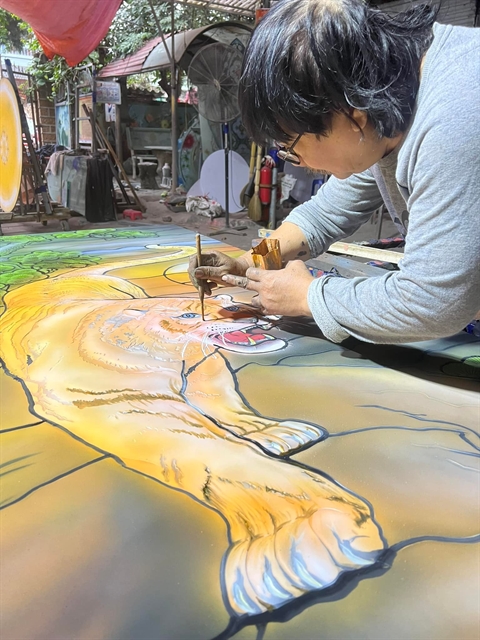 |
| Artist Phạm Hồng Vinh has followed the art of glass painting for more than 30 years. — Photo courtesy of Vinh |
By Thanh Nga
When it comes to glass painting in Việt Nam, one name that stands out is Phạm Hồng Vinh, also known as Vinh Coba, the renowned "golden hand" artist.
Vinh is credited with pioneering art glass paintings in the country. With his skill and creativity, the 63-year-old artist has transformed delicate glass panels into timeless works of art.
Vinh's glass paintings are used in interior and exterior decoration in private houses or places of worship, household appliances, and gifts. His creations are a fusion of glass engraving and painting techniques, drawing from global glass processing technologies.
Over more than three decades, Vinh has not only made original glass paintings but also restored and preserved deteriorated and broken stained glass artworks in numerous churches and pagodas across Việt Nam. His works hold significant cultural and spiritual value for the Vietnamese.
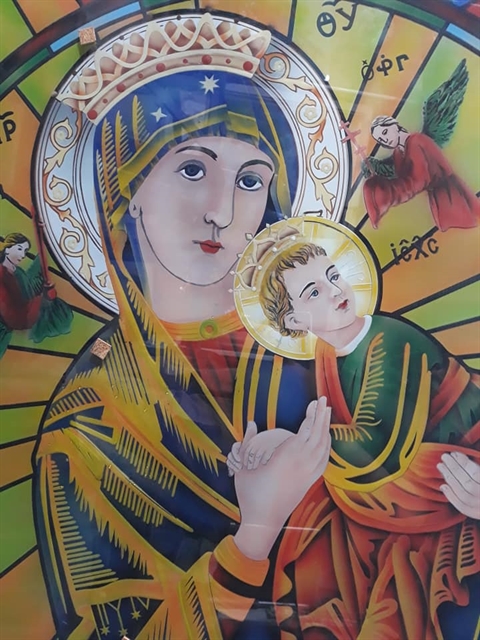 |
| A glass painting 'Đức Mẹ Hằng Cứu Giúp' (Our Mother of Perpetual Help) of artist Phạm Hồng Vinh. — Photo courtesy of Vinh |
Vinh has brought his art to multiple 'glass canvas', adorning windows, partition walls, ceilings, floors, and even glass bridges.
Vinh’s aspiration is to portray images of architecture, figures, and the way of life through glass paintings, thereby contributing to the preservation of the Vietnamese national identity and fostering love for the homeland.
His paintings of Hà Nội, such as A Glimpse of Việt Nam, capture the city's beauty, while works like One Pillar Pagoda, Temple of Literature and Long Biên Bridge meticulously recreate these landmarks on glass panels.
Vinh's works also depict Hà Nội's inhabitants, with paintings such as A Woman in Long Dress by Hoàn Kiếm Lake, Strolling Blind Musician Couple and A Street Vendor. Through his realistic style, he portrays the national costume, lifestyle, and spiritual essence of ancient Hà Nội.
Additionally, Vinh has an extensive collection of glass sculptures featuring the city's iconic landmarks, including Turtle Tower, Sword Lake, Ngọc Sơn Temple, Thê Húc Bridge, and lotus flowers.
 |
| Vinh is credited with pioneering the genre of art glass sculpture in Việt Nam. — Photo 24h.com.vn |
Creating a glass painting is a complex process, and those depicting ancient Hà Nội demand even more skill from the artist. Vinh follows a meticulous eight-step process, involving design, shaping, painting, and tempering the glass in a kiln. He adheres to strict rules to ensure vivid and realistic qualities in his works, such as the principles of perspective, light and shadow and focal points.
To ensure longevity and resistance to harsh environments, Vinh employs negative sculpting techniques, grinding methods, and specialised heat-absorbing paint materials that prevent fading, peeling and damage. Not only do Vinh's art pieces embody national identity, but they are also highly functional, serving as construction materials and being used in interior and exterior decor.
In recognition of his significant contributions to the glass painting industry, Vinh's company, COBA Art Glass JSC, received the prestigious Super Cup "Strong Brand and Sustainable Development" from the Việt Nam Union of Science and Technology Associations.
Vinh himself was honoured with the "Golden Hand" Cup for his exceptional craftsmanship. Furthermore, his paintings have been certified as Việt Nam Records, and he has been personally bestowed the title "Meritorious Artist" by the State.
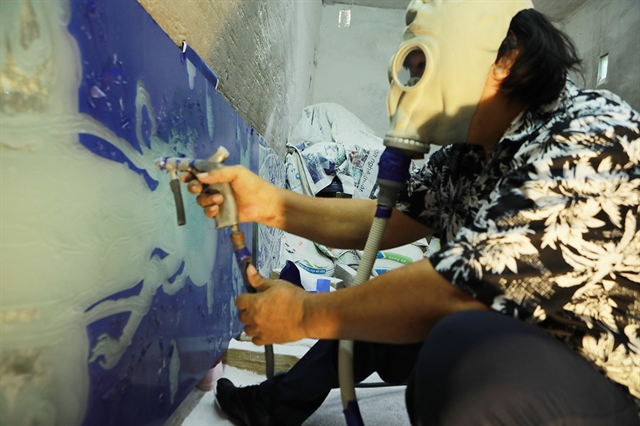 |
| Vinh’s glass paintings use coloured ceramic enamel. Before being finished, each painting is melted at 700 degrees Celsius and vitrified. — Photo 24h.com.vn |
Recently, the Việt Nam Federation of UNESCO Associations acknowledged Vinh's contributions to the art glass craft, certifying his significant role in its formation and development, and his practical contributions to cultural development in line with UNESCO criteria.
Passion
Vietnamese glass paintings emerged relatively late compared to the rest of the world, around the 1990s. Despite having an education in economics, Vinh has a talent and deep passion for fine arts, and more than 20 years ago he began drawing and creating paintings on porcelain.
After that, recognising the increasing use of glass in construction, Vinh sought to infuse more soul into glass panels used as mirrors and partitions. Initially, he relied on manual grinding techniques to create blurry effects and engraved simple patterns onto the glass. By using shallow and deep sculpted lines, he could craft vivid and aesthetically pleasing shapes.
 |
| One of Vinh’s glass paintings. — Photo 24h.com.vn |
However, manual grinding proved to be time-consuming and labour-intensive. To address this, Vinh conceived the idea of developing a glass grinding machine. This innovation not only significantly increased his productivity but also allowed for the creation of richer and more detailed designs.
Presently, Vinh's glass paintings are a fusion of craftsmanship and modern technology, incorporating graphic technology and glass tempering techniques.
Vinh's passion for the art of glass painting has inspired and trained over 200 artists and workers during his 30-year career.
"With the establishment of a recognised domestic brand, my ultimate aspiration is to solidify the reputation of Vietnamese glass paintings. I aim to convey the cultural values of both the past and the present through my artworks. I hope that whenever people think of glass paintings, they will immediately envision the essence of Việt Nam and its people," Vinh said. VNS
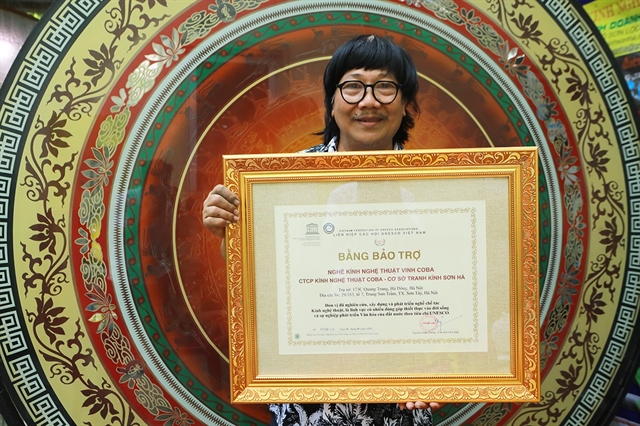 |
| The Việt Nam Federation of UNESCO Associations acknowledged Vinh's contributions to the art glass craft, certifying his significant role in its formation and development. Photo 24h.com.vn |




